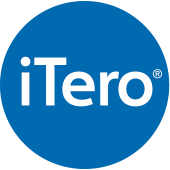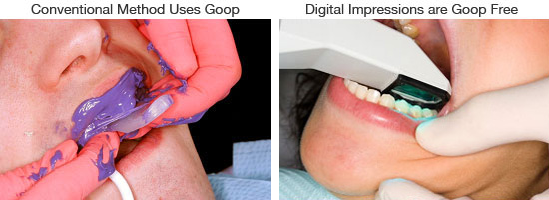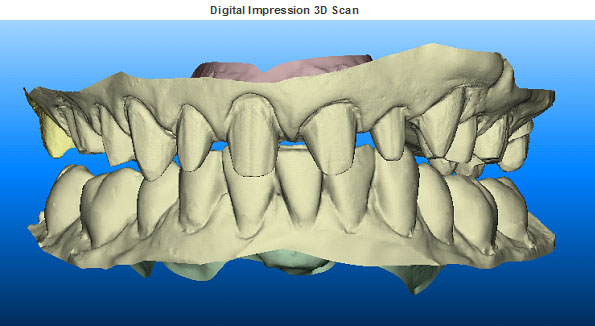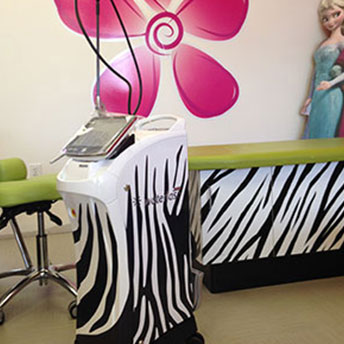Laser Dentistry
Meet Zoe The Zebra, our Waterlase laser - Thousands of shots saved!
Zoe has allowed us to not use a drill or give shots, in most situations, so many procedures can be done with no anesthetic. Dr. Feuquay is one of the few pediatric dentists in The Woodlands who offers laser dentistry. She was also trained on-site, in the office, by lead instructors from The Children’s Hospital in Denver, in performing frenectomy. Dr. Kim works with several local lactation and speech consultants in evaluating the need for this procedure and performs them in the comfort of her office.
Carestream CBCT
Carestream CBCT is a digital, 3D imaging system that allows your doctor to provide quick, comfortable, and effective dental imaging for precise diagnosis, treatment planning, and the evaluation of certain conditions. The data gathered is used to reconstruct a 3D image of your anatomy: dental (teeth); oral and maxillofacial region (mouth, jaw, and neck); and ears, nose, and throat (ENT).
You can take advantage of a more accurate, comfortable dental treatment with CBCT imaging. Special features include:
- A scan that takes less than a minute but provides enough data for a complete diagnosis
- A safer diagnosis with less radiation than traditional CT scanners
- Increased comfort: you are seated in an open environment with plenty of space
- A more cost-effective imaging system
- Data is easily shared, so you can stay informed and be able to make educated decisions on your course of treatment
iTero® Digital Impression System

Conventional vs Digital Impressions
No more goop, gagging, or discomfort. Using an iTero scanner, your dentist can take a highly accurate digital impression. The new technology completely eliminates the tray and putty impressions, where the experience is comparable to stuffing a big wad of gum in your mouth. The old technique is incredibly unpleasant and frequently results in taking multiple rounds of impressions that can be rejected, broken, or misplaced. The iTero scanner ensures a more accurate impression from the start, resulting in improved treatment and a more comfortable patient experience. Digital impressions give you the ability to see your teeth instantly in 3D, improving communication during the consultation and treatment process.

How does it work?
The iTero scanner digitally captures the structure of the teeth and gums using the latest optical technology. The scanner is a compact, hand-held wand. Once your dentist begins the scanning process, it can be stopped and started as many times as necessary.
Your mouth is scanned with a radiation-free laser and, in as little as two to three minutes, the laser renders a digitally perfect, 3D impression of your teeth and soft tissue structures. Through digital software, you'll then be able to follow the progress of the scans, including a 3D model of your teeth on our computer screen. The iTero scanner can be used for any restorative treatment including crowns, veneers, inlays/onlays, bridges, and implants, as well as orthodontic treatments like Invisalign®.

X-rays
Dental radiographs (X-rays) are a vital and necessary part of your child’s dental diagnostic process. Without them, certain dental conditions can and will be missed. Dental radiographs detect much more than cavities. For example, radiographs may be needed to survey erupting teeth, diagnose bone diseases, evaluate the results of an injury, or plan orthodontic treatment. Radiographs allow dentists to diagnose and treat health conditions that cannot be detected during a clinical examination. If dental problems are found and treated early, dental care is more comfortable for your child and more affordable for you.

The American Academy of Pediatric Dentistry recommends radiographs and examinations every six months for children with a high risk of tooth decay. On average, most pediatric dentists request radiographs approximately once a year. Approximately every three years, it is a good idea to obtain a complete set of radiographs, either a panoramic and bitewings or periapical and bitewings.
Pediatric dentists are particularly careful to minimize the exposure of their patients to radiation. With contemporary safeguards, the amount of radiation received in a dental X-ray examination is extremely small. The risk is negligible. In fact, dental radiographs represent a far smaller risk than an undetected and untreated dental problem. Lead body aprons and shields will protect your child. Today’s equipment filters out unnecessary X-rays and restricts the X-ray beam to the area of interest. High-speed film and proper shielding ensure that your child receives a minimal amount of radiation exposure.

